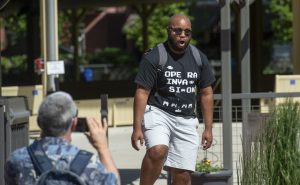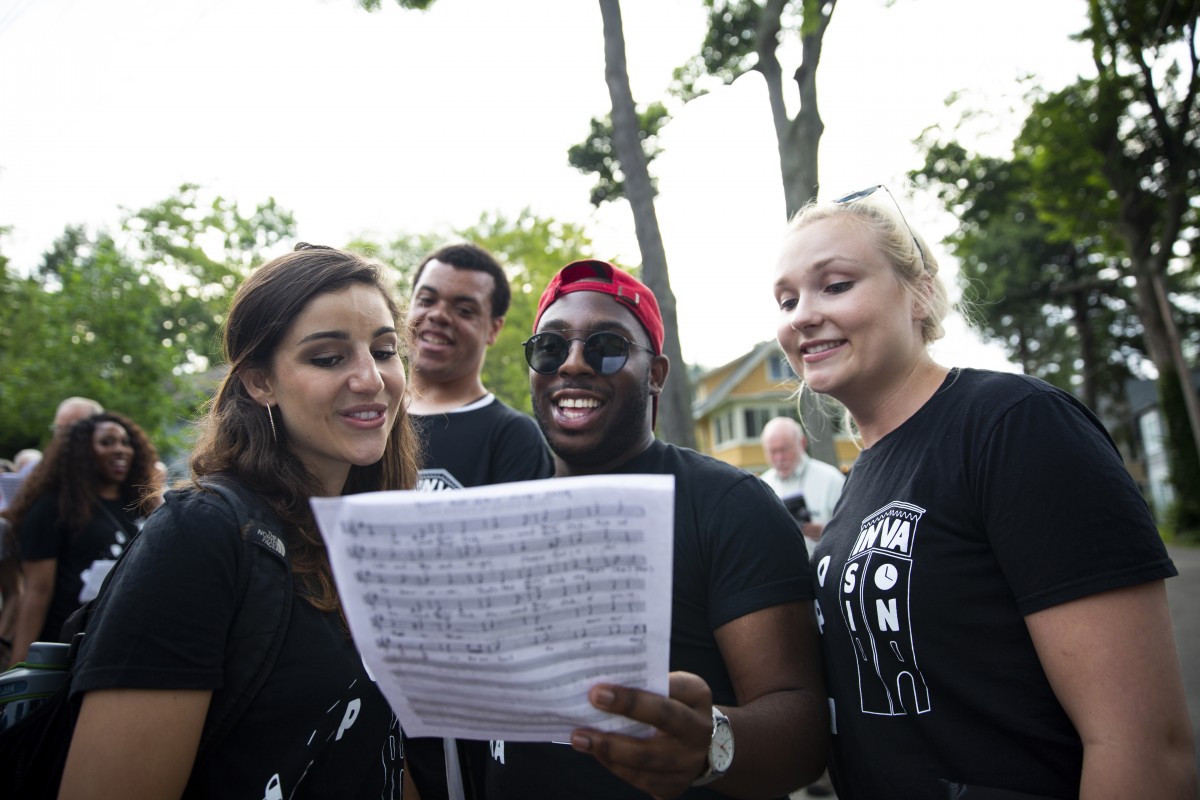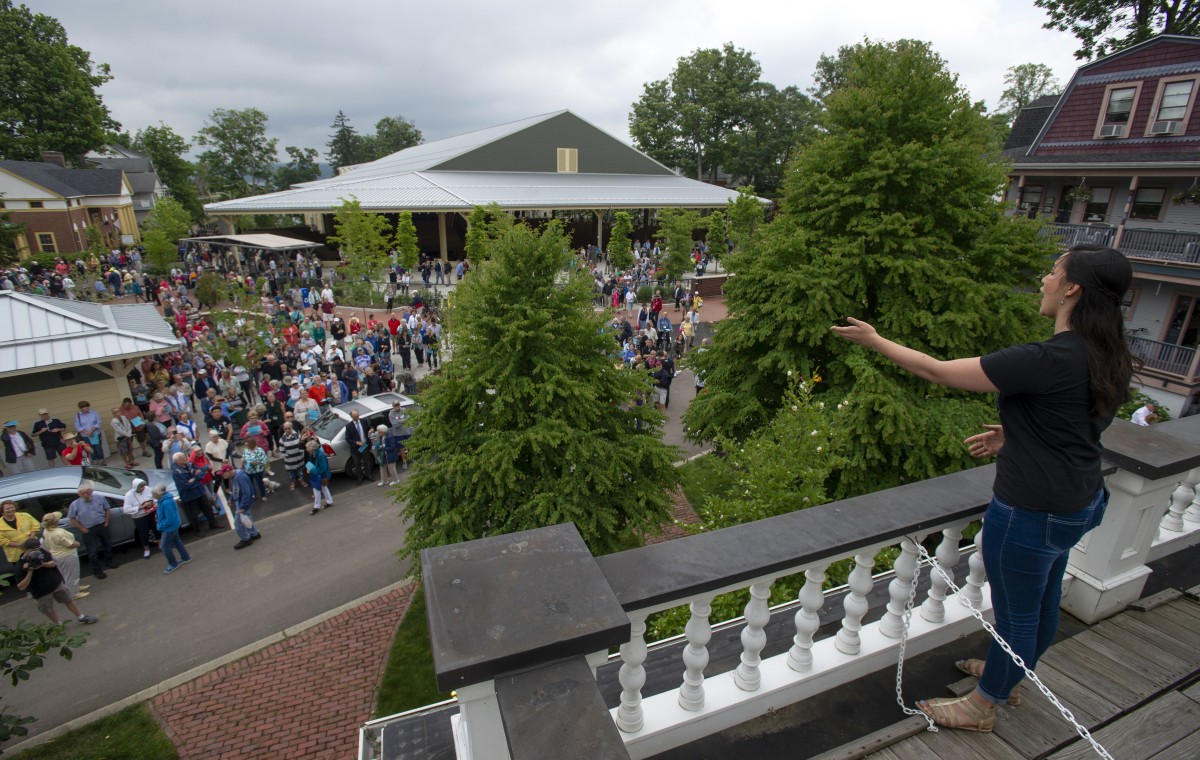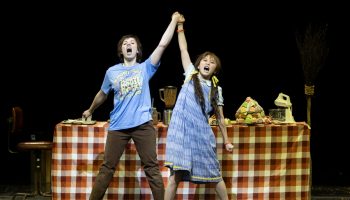Musicians, whether instrumentalists or singers, collaborate constantly. Instrumentalists accompany singers in an array of different performances such as opera, musical theater or recitals.
For Music School Festival Orchestra clarinetist Dustin Chung, playing with singers is not an outlandish concept, but in the case of Chautauqua Opera Company’s latest performance, it’s a bit different. He said instead of just following the music, they have to follow the singer to adequately accompany them.
“Singers use a very human rhythm — it’s not precise,” Chung said. “You have to throw everything away that is metronomic and really kind of embody what it is they want to do. It’s not just reading what’s on the page.”
At 7:30 p.m. tonight on Odland Plaza, four Young Artists, 10 students from the MSFO and pianist Rick Hoffenberg will explore a more improvisational form of collaboration. They will gather to perform Terry Riley’s “In C” as an Opera Invasion.
The piece is a construction of 53 measures that contain rhythms and pitches, but each measure can be repeated. The measures are separated, written as if each phrase is a complete song.
Instead of having a time signature, the percussionist will keep the beat. The conductor will cue the first musician, who will play the first measure as much as they desire. From there, the next instrument will be cued in and start from the beginning. As the piece moves forward, the conductor will continue adding instruments.
Steven Osgood, general and artistic director of Chautauqua Opera Company, said “In C” has a general structure but it varies from each performance.
“That’s how any performance of ‘In C’ follows from beginning to end,” Osgood said. “It can take 30 minutes as a relatively fast performance of ‘In C’ — it would generally take 45 minutes, or as long as 90 minutes.”
“In C” requires the musicians to lead the song and decide when it is finished. In this performance, the musicians must finish the piece in 30 minutes. Osgood will hold cards to keep the instrumentalists and singers on track to end before the 8:15 p.m. Amphitheater performance of “Made in Charlotte” by the Charlotte Ballet.

“When I flip over to number five, it doesn’t mean that everyone goes to five,” Osgood said. “It just means that everyone should be within three behind or three ahead.”
Instrumentalists will be arranged in a circle, with the percussionist in the middle. The Young Artists, which are mezzo-soprano Quinn Middleman, tenor Jordan Loyd, bass-baritone Michael Colman and soprano Cristina María Castro, will be moving around and through the circle.
“What we hope to encourage from our audience is — everyone picked up on it right away last year — the idea of depending on where you stand, you experience this piece differently,” Osgood said. “So, feel free to stand in multiple places.”
With singers involved, selections usually must have words for them to sing. But in this piece, there is no text, requiring the singers to choose vowels or individual syllables in order to perform the song’s pitches.
“It’s what’s called a vocalise,” Hoffenberg said. “A vocalise is a sung line without text, so they can choose different vowels or different consonants if they want.”
Hoffenberg said text develops the music for singers, so this performance is an opportunity for them to have a different experience.
“It is different to do something where the voice is essentially an instrument,” Hoffenberg said. “Because instruments are not uttering text — they are just playing pitches.”
Osgood said it’s a showcase of how singers can use their voices as instruments.







